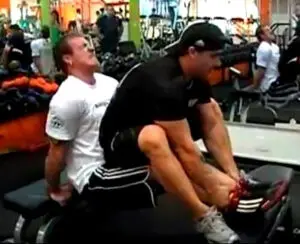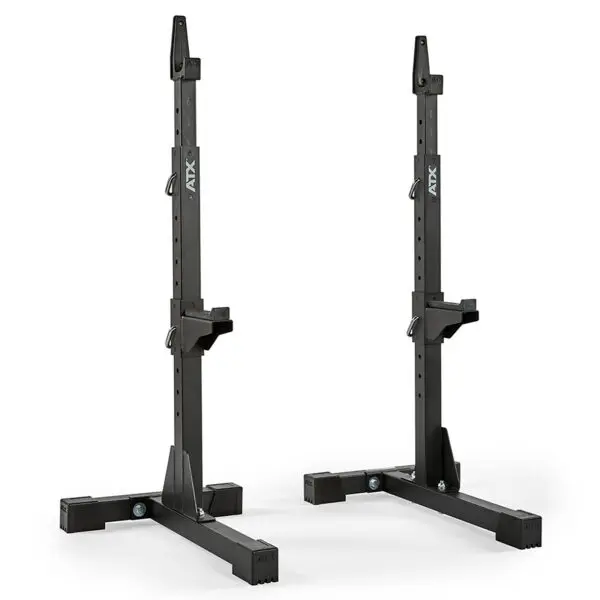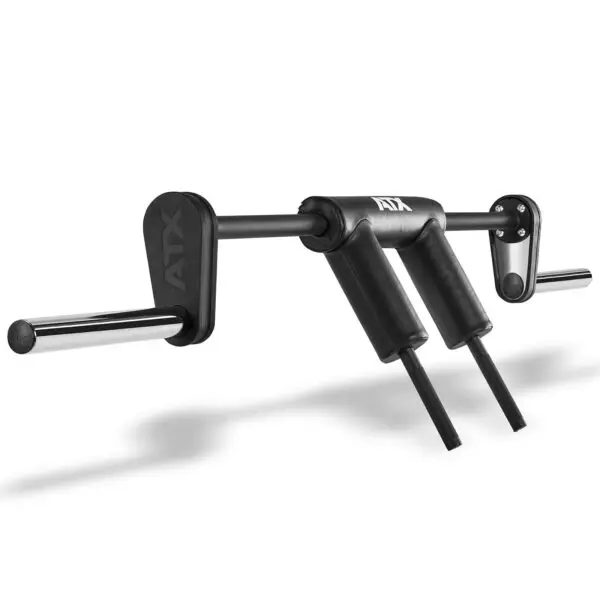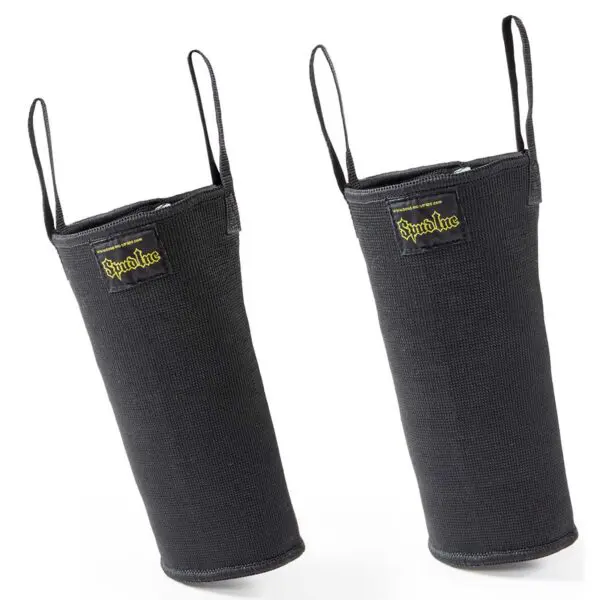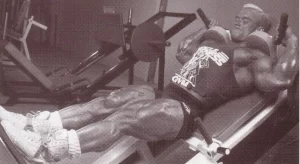
 KNEES - Build Muscle to Avoid Injury and Pain
KNEES - Build Muscle to Avoid Injury and Pain
Exercises for this Crucial Joint
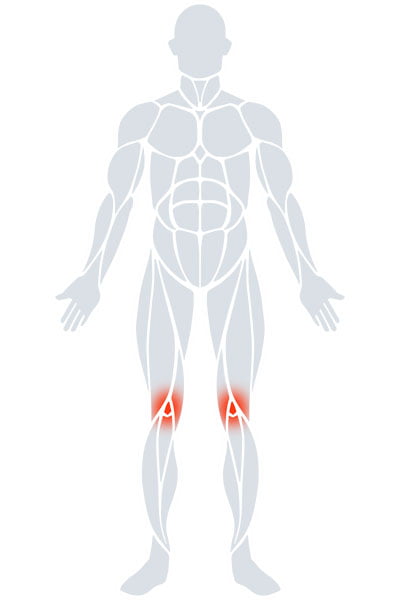
Best equipments for Knees
-
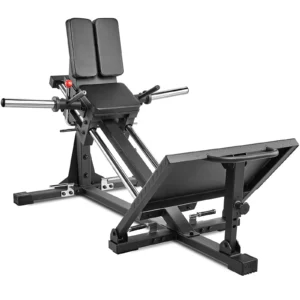
ATX® Compact Leg Press ATX-CLP-700
$1,995.00Add to cart -
ATX® Squat Stands 510
$395.00Read more -
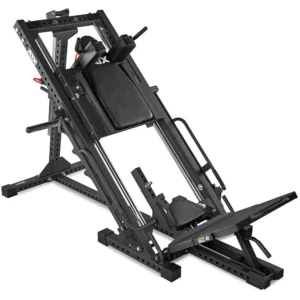
ATX® Leg Press/Hack Squat 4in1 Combo
$3,950.00Add to cart -
Spud Knee Sleeves 1 Ply
$69.00Select options This product has multiple variants. The options may be chosen on the product page
Knees
Frequently Asked Questions

 How can knee training help combat pain?
How can knee training help combat pain?
Pain is a common sign of many health conditions. Before you start any training program, it’s a good idea to have a talk with your doctor about what could be causing your knee pain, or any pain you’re feeling in other parts of your body, for that matter. Just because you’ve been given the go-signal to train your knees doesn’t mean you should dive into an intense program full of squats and lunges until failure. There are a number of ways to tackle pain and I’ll take you through them.
1. Front-sided pain
Let’s say you’re struggling with pain on the front-side of your knees. This can often be helped by paying some attention to the front-side of your legs. Yes, I’m talking about the quads here. The quads are largely responsible for moving the knees, so if you’re struggling with painful or weak knees, this is a good place to look for answers. One muscle in particular—the rectus femoris—is especially guilty when it comes to causing pain in the lower half of the body. This muscle goes all the way across the hips and knees, which makes it a good place to focus on if you are feeling front-sided pain.
If you’re looking to get rid of pain in this area, an elevated hip flexor stretch is the way to go. If you’re going for this exercise, don’t just stretch! Pulse in and out of the position for about half a minute to get this muscle warmed up.
2. Focus on the back.
If the backside of your body is not strong—yes, I’m talking about your calves, glutes, hamstrings and lower back—then your knees are going to suffer for it.
No matter what exercise you’re doing, you should be aiming for the maximum training of your target muscles while reducing the stress on your joints as much as you possibly can.
When you’re focusing on the back of your body, exercises like glute bridges, hip thrusts, calf raises and back extensions are all great for knee pain. Just remember that your workout should not just be about getting the exercises done, but should be about getting the form right.
3. Ankle mobility
Now let’s move onto the ankles. Did you know that ankle mobility plays a role in supporting your knees? Your ankles play a huge role in your overall stability, mobility and function. Foam rolling is great for stretching your calf muscles, but the three-way ankle joint mobilisation can really improve your mobility and decrease your pain in a short amount of time.
4. One leg exercises
If you’re struggling with knee issues, one of the best exercises you can do is one that requires you to use one leg at a time. Why is this? Because this will put you in a safer position and lower your risk of hurting yourself. Your muscles are also going to work together in a more dynamic way to keep you upright, so you’ll really be activating your quads, glutes and hamstrings.
Just spending even a small amount of time working on these areas of your body can do wonders for your knee pain. And if you’ve been struggling with this pain, then you know just how valuable that can be.

 What are the best exercises and workouts for my knees?
What are the best exercises and workouts for my knees?
Now that you know how knee workouts can help, let’s move onto some exercises that are going to work your knees and other parts of your body. Remember, when it comes to your knees, there’s a big difference between pushing yourself and harming yourself. The moment you feel pain in your knees, that’s a sure sign that you need to slow down.
1. Leg extension
The leg extension is a great exercise to get your legs competition-ready, but if you have knee issues, you need to take it really easy on this one. This exercise will wake up your quads in no time and get a healthy amount of blood pumping into those thighs. When it comes to the knees, always keep them locked and don’t go too heavy on the weight.
Start off with a good 2 set warmup of about 40 reps. Then move onto 4 sets of 30 reps, with 60 to 90-second rest sessions in between. High reps will build those legs and lighter weights will help you get there.
2. Dumbbell steps
If squats, hack squats and leg presses aren’t for you or your knees, don’t worry. Just move onto the dumbbell step-up. This is much kinder to your knees than squats and presses, and it will still help you build muscle. Do at least 4 sets of about 15 reps here, so take it nice and slow.
Start by holding dumbbells, one in each hand, and step up on a bench so you are standing on it with both feet. Bring your other leg up to form a 90-degree angle and then step back down onto the floor while your other leg that’s left resting on the bench also forms a 90-degree angle. Switch legs every time you take a step up.
3. Single leg barbell squat
Here’s another single leg exercise that will get your blood flowing in no time. Start off by resting one foot on a bench placed behind you with your knee slightly bent. Bend your other leg to form a 90-degree angle as you lower your body to the floor. You can use barbells or dumbbells, but I prefer the former.
If you have knee issues, step out even further away from the bench. You’re going to really feel this in your hamstrings and glutes.
4. Barbell lunges
We’re moving onto lunges now. If you can, try to do as many as 3 sets of 15 reps. Once again, dumbbells are okay, but barbells just work better.
Start by placing a bar at your back, just behind your shoulders and stepping forward as far as you can go with your knees forming a 90-degree angle. Bend your other knee but don’t let it touch the floor. If you’ve completed a good workout at this point, you can decrease your reps, but if you’re only starting out, aim high.
5. Stiff-legged barbell deadlifts
Not only is this one great for your hamstrings, but it will also target your lower back muscles. Aim for about 4 sets of 8 to 12 reps for this one.
Start by standing with your feet shoulder-width apart. Grab the barbell in front of you with an overhand grip. Pull the bar up, hold and then lower back down. Do not move your legs and knees throughout the exercise—it’s called “stiff-legged” for a reason! Make sure you squeeze your glutes when you lift the bar. You should also feel the stretch in your hamstrings when you’re lowering it. Don’t drop that barbell and make sure you lift and lower it with a controlled movement.

 What's the best exercise equipment for my knees?
What's the best exercise equipment for my knees?
Now let’s talk about the equipment that will help you get your knees back into shape, whether you’re struggling with knee pain or simply want to strengthen them so that the rest of your body benefits.
1. Treadmills
Walking can be a killer on the knees, especially if you’re doing it over harsh terrain. This is why treadmills are great—they absorb a lot of the impact you’re getting from running over solid ground. But treadmills aren’t just for running as they’re also great for brisk walks.
2. Elliptical trainers
Elliptical trainers are made to simulate the movement of climbing stairs. They’re great for people with mild knee pain or more serious joint issues like arthritis. The biggest benefit of this equipment is that you can choose the resistance level and reduce the overall impact of the movement on your knees.
3. Rowing machine
If you can’t buy one of these, use the one at your local gym. Rowing machines are great for just about every joint in your body, including your knees and wrists. If you’re having issues with your knees, it’s very likely that you’re struggling with your wrists too. This machine tackles both joint issues and gives you a full-body workout too!
4. Stationary bike
Using the stationary bike is a great cardio workout for anyone with bad knees. If you’re only a beginner or if you suffer from major knee pain, go for the recumbent bike—this one reclines so it’s really gentle on your knees. An upright stationary bike is going to work your core, but it can be tough on your knees. However, once your knees get stronger, you can increase the resistance.
5. Resistance training machine
The resistance training machine is perfect if you want to work on your lower body without hurting your knees. You get to set the weights before you begin and you can use the machine to do your leg extensions or leg curls. Start off with some really light weights and then work your way up.
6. The leg press
If you want to crush your leg day without damaging your knees, then the leg press is for you. This machine allows you to choose how much weight you want to load and provides you with good back support as you push the foot pad away from you. Start off with lighter weights so you don’t end up overworking your legs and knees, then move onto heavier weights once they are stronger.
7. Resistance bands
Resistance bands are great, aren’t they? They’re lightweight and you can do just about anything and everything with them. These bands come with different resistance levels, so you get to choose your starting point. They’re great for toning your legs and glutes, as well as strengthening your arms, all without putting extreme pressure on your knees. What more could you ask for?
8. Dumbbells and kettlebells
Dumbbells and kettlebells are great for adding an extra challenge to your lunges, squats and step-ups. When you have different dumbbell and kettlebell weights at your disposal, you can shake things up depending on how strong you feel on your training day.
9. Exercise balls
Exercise balls are great for taking some pressure off your knees while helping you strengthen and stabilise your core. The sky is really the limit when it comes to exercise balls, so I strongly recommend you get your hands on one of these!
10. Knee compression sleeve
Now that we’ve covered the knee workout equipment, let’s talk about the health of your knees. The knee compression sleeve is a great accessory because it does what it says on the box—it compresses the knee. That means it increases your blood flow to this joint and minimises your pain. This sleeve easily slips around your knee and protects it so you can really kill it at the gym. You don’t have to have a knee injury to use these—they’re really popular with competitive weightlifters and gym buffs too.
Your knees are essential to all your activities in your day-to-day life, whether you’re just at home, office, gym, or anywhere in between. If you don’t take care of them and train them right, you’re going to have some trouble with your basic tasks and workouts. Now that I’ve shared with you what I know about knee pain, and the exercises and equipment that can help prevent it, it’s time to get those knees working!

 Do Knee Sleeves make you Weak?
Do Knee Sleeves make you Weak?
No, knee sleeves do not make you weaker. In fact, they can make you stronger! Knee sleeves keep the knees warm and help mainly with the ‘bounce’ at the bottom of the squat I.e., squatting back up and extending the knees. There’s a reason that competitive powerlifters wear knee sleeves. They do make a difference in both performance and protection against injury.
HOWEVER, you probably shouldn’t wear knee sleeves all the time, at least the super tight competitive ones. Get used to strengthening/warming up your knees without the sleeves. This is advantageous for overall knee health and strength. The sleeves should not be a crutch, meaning you shouldn’t NEED them to squat. Just like you shouldn’t need coffee to get out of bed in the morning.

 What do Knee Sleeves do for Squatting?
What do Knee Sleeves do for Squatting?
Knee sleeves help squatters get out of the ‘bottom of the hole’. This refers to the assistance provided to the squatter get through the sticking point of the squat. Basically, they help you squat back up. The hardest part of the squat is the very bottom, or ‘the hole’.
Knee sleeves help extend your knees (use your quads) to stand yourself back up from the bottom of a squat. Tight knee sleeves used by powerlifters can help add a few kilos to their squat numbers. Lighter knee sleeves are also good for keeping the knees warm and injury free if you’re older or have had knee issues in the past.
If you’re injured, however, get checked out by a doctor before you use knee sleeves – they should be used to help healthy legs get stronger, not prevent a weak leg from snapping!

 Are Knee Wraps Cheating?
Are Knee Wraps Cheating?
It depends on the competition. In Powerlifting there are two types of competitions: Raw and Equipped. In Raw IPF (International Powerlifting Federation) competitions, the use of assistance equipment, including knee or elbows wraps is illegal. The aim is to see who can lift the most weight without extra assistance.
In equipped powerlifting, however, it is legal to use knee wraps. Lifters will almost always lift more with extra assistance; hence it would be an unfair advantage is you wore knee wraps in a raw comp. It’s also illegal in most equipped comps to wear both knee wraps and knee sleeves, because that would be both unsafe and a very unfair advantage for that lifter.
For the average gym-goer, knee wraps are only cheating is you believe they are. Training should be fun, and you should train how you like, and how you can. If you think you shouldn’t squat with wraps because you like to raw dog it, go for it. If you need sleeves due to a previous injury, age, or you just like using them, do that. It’s not cheating because you aren’t competing. Just enjoy your training.

 Is Squatting bad for my Knees?
Is Squatting bad for my Knees?
Squatting with weights is NOT bad for your knees! In fact, squatting can make your knees stronger IF you do it safely! Like anything, if you do an activity in an unsafe way, you’re more likely to hurt yourself. Driving is not inherently dangerous, nor is one beer (if you’re an adult). Swerving and driving too fast on the road and drinking excessively until you’re drunk are two very dangerous things – especially when they’re done at the same time!
What we mean by that is, if you squat with too much weight too soon, with bad form, then yes, squatting will be bad for your knees. However, if you aim to use proper technique – gradually increase the weight on the bar over time as you adapt and always make sure to warm up before jumping into a heavy set – squatting will be perfectly safe and healthy for your knees. Assuming you don’t have a pre-existing injury or medical condition – this is not Medical Advice; we will not be liable if you injure yourself, but we will take credit if you read this and then break a squat world record.
Knees Training Tips

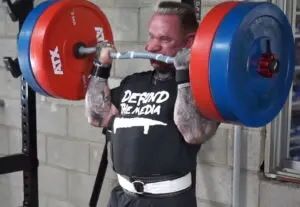
25 EZ Curl Bar Exercises
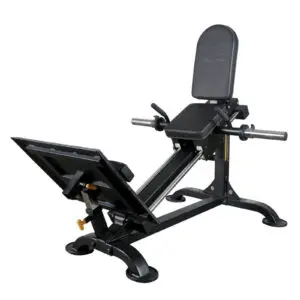
Powertec Compact Leg Sled P-CLS
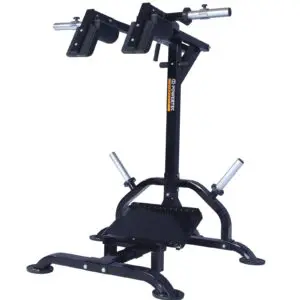
Powertec Leverage Squat Machine L-SC
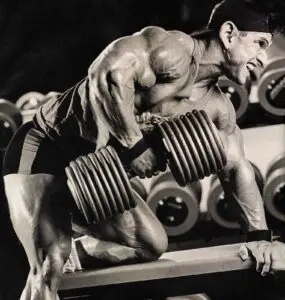
Back Day Exercises
